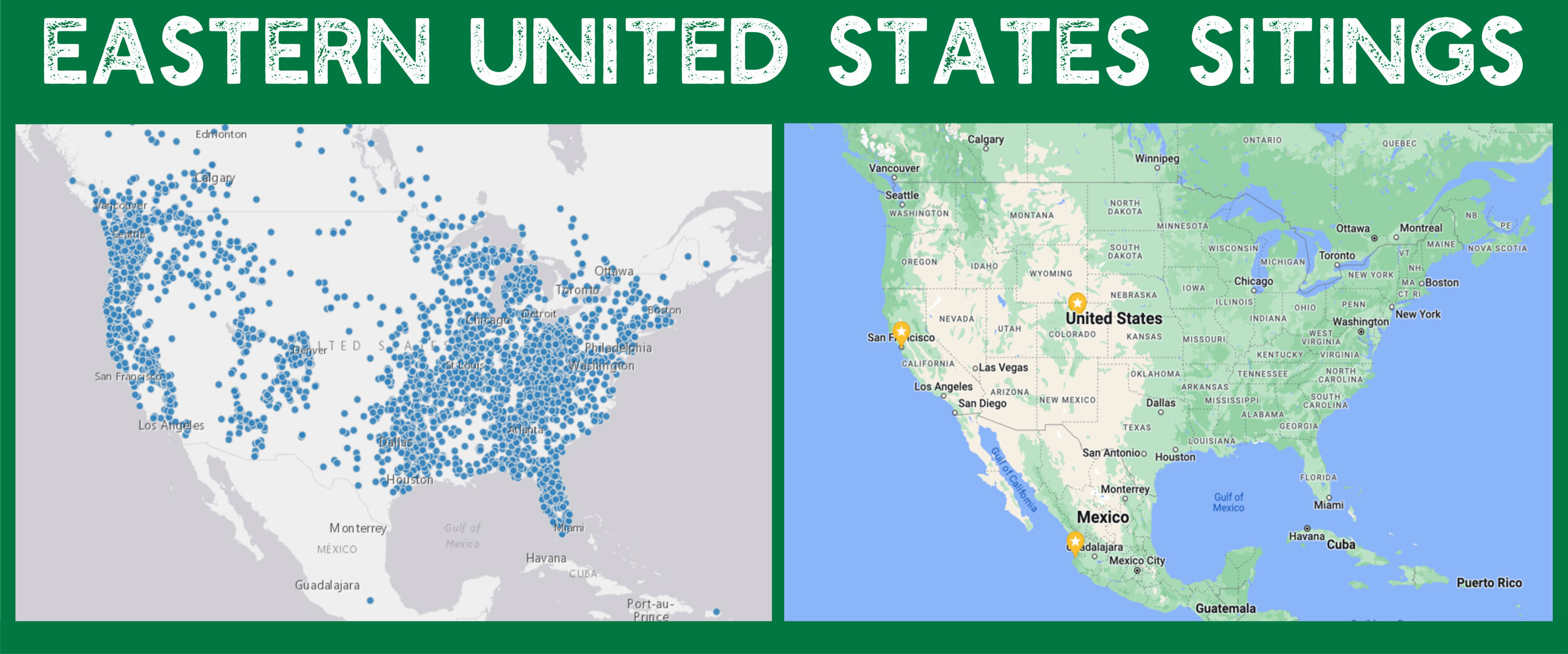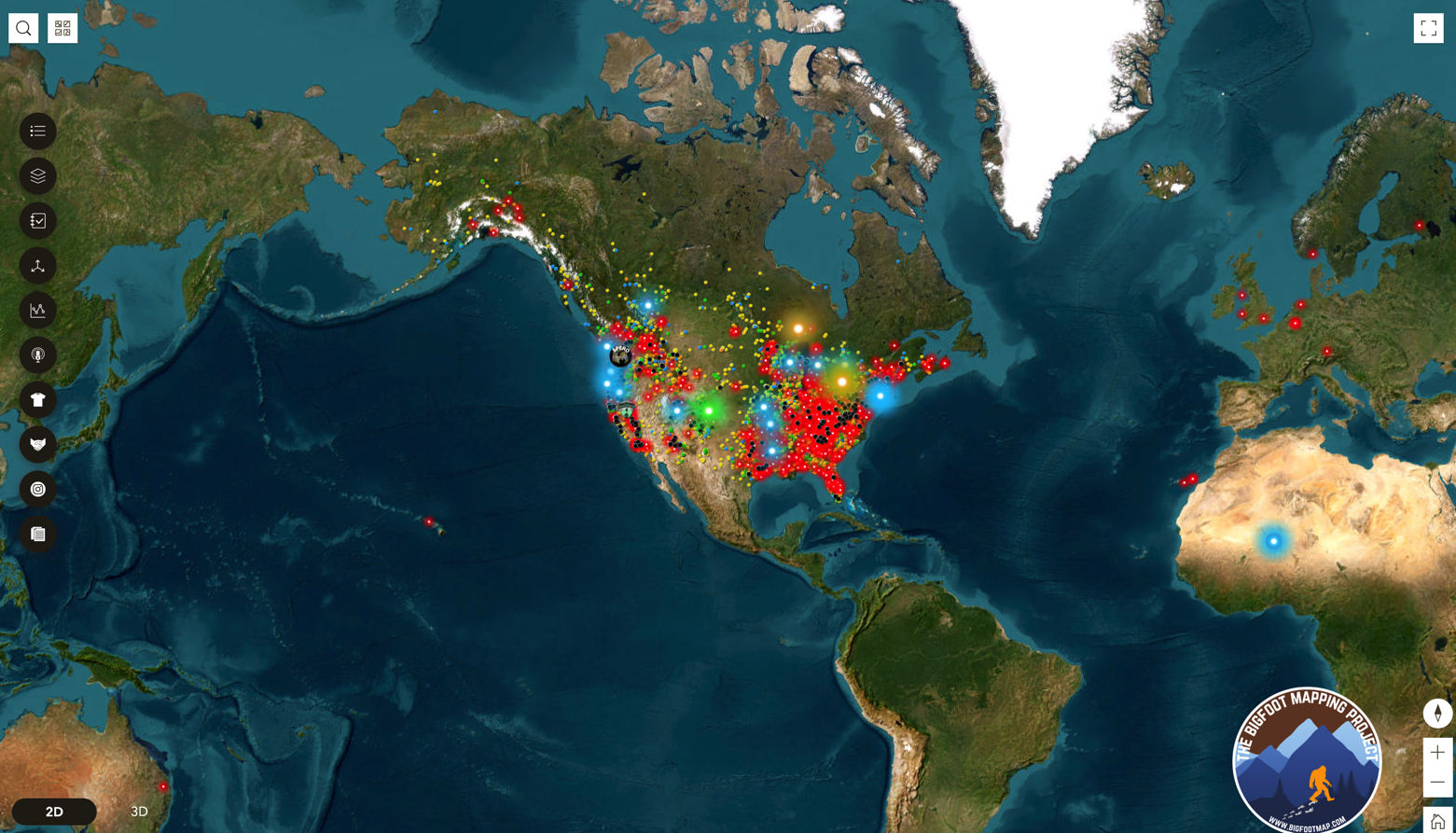Decoding Bigfoot's Trail: How a Bigfoot Sightings Map Can Predict Bigfoots Whereabouts
Where is Bigfoot? By analyzing a comprehensive Bigfoot Sighting Map, you can see where sightings and concentrated and better predict Bigfoot’s movements and up-to-date location.
Bigfoot Sighting Map Courtesy of the Bigfoot Mapping Project (click to enlarge). Screenshot from www.bigfootmap.com.
Today’s post will focus on tracking the elusive Bigfoot, a creature that has managed to keep humanity on our toes for hundreds of years. And our tool for tracking the movements and potential locations of Bigfoot will be a detailed and comprehensive map of bigfoot sightings that will allow you to visualize and potentially predict Bigfoot's next move.
The legendary creature known as Bigfoot has been sighted in many parts of North America, leading to numerous theories about his movement patterns and general whereabouts. Bigfoot’s location has been an ongoing mystery that continues to baffle scientists and enthusiasts alike as it remains unclear whether or not Bigfoot is continuously on the move or if there are multiple Bigfoot-like creatures scattered around North America.
Given the mystery surrounding Bigfoot and his whereabouts, looking at a comprehensive bigfoot sighting map is great way to make educated and scientific predictions and conclusions about Bigfoot, his movements, and his location at any given time.
A Bigfoot sightings map is a two-dimensional grid that depicts all of the landmass of North America and has points plotted at all of the geographical locations where a Bigfoot sighting has been reported. Every plotted point represents one reported Bigfoot sighting. And, by compiling all of these sightings on a map, you can use the data to see where sightings are concentrated and also track/predict Bigfoot’s movement patterns.
Why is the Bigfoot sightngs map such a useful tool? From a scientific and mathematical standpoint, patterns often hint at reliability and predictability, and this is where any serious analysis of determining Bigfoot’s whereabouts should begin.
Analyzing a map of Bigfoot sightings can give you important and incredibly useful insights into Bigfoot's preferred geological living environment, potential movement patterns, and, most importantly, his current location.
Bigfoot Sighting Map: Concentrated sightngs in the Pacific Northwest
Additionally, the sightings map can help you to determine if there are certain geological features favored by Bigfoot. For example, does he prefer dense forests over open plains? Does he prefer to be near major water sources, cave systems, weather conditions, etc.? Does Bigfoot tend to appear during specific seasons or times of day?
By better understanding these questions and there potential answers, you have a much better chance of determining Bigfoot’s current location at any given point in time.
Many Bigfoot sightings have been reported in the dense, remote forests of the Pacific Northwest regions of the United States and Canada. This pattern could suggest that Bigfoot prefers forested areas far from human habitation, perhaps for shelter or food resources. The more we understand these patterns, the better we can predict where he might show up next.
Image: Mashup Math MJ
Of course, analyzing a Bigfoot sighting map isn't just about connecting dots or plotting points on a grid. The map itself is only a tool and it requires an understanding of the geographical, climatic, and ecological factors at play. Are there abundant food sources in the areas of reported sightings? What's the population density like? Answers to such questions deepen our understanding of Bigfoot's behavior and raise new questions as well.
In the case of being a Bigfoot detective and using science and data to track the elusive being, we are not merely passive observers, but active participants attempting to unravel the mysteries of Bigfoot's existence. And, in doing so, we contribute to the larger discourse on Bigfoot and his alleged movements.
Bigfoot Sighting Map: Is Bigfoot a migratory creature? Are there multiple Bigfoots?
As organizations continue to collect and analyze sightings data, a Bigfoot sighting map becomes an ever-evolving tool, gaining in accuracy and detail. It's a testament to the collective efforts and scientific curiosity of the Bigfoot community.
However, it is also important to note that, while it's easy to get caught up in the thrill of the chase, it's important to approach each reported sighting with a healthy dose of skepticism. Always consider the source and the circumstances of the sighting. Not every footprint in the mud belongs to Bigfoot.
If you are looking for an interactive and comprehensive Bigfoot map that is constantly updated, we recommend the Bigfoot Mapping Project’s website, where you can see up-to-date Bigfoot sightings, analyze geographical features such as elevation, and report a sighting of your own!
Source: The Bigfoot Mapping Project via https://www.bigfootmap.com
More Free Resources You Will Love:
Search Tags: bigfoot, bigfoot sightings map, bigfoot sitghing map, bigfoot sighting map, map of bigfoot sightings, bigfoot map, bigfoot on google maps












